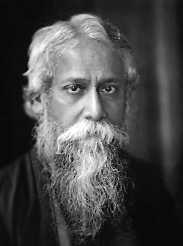A fresh look at Tagore''s creative genius
A decade ago I went to Jadavpur University, Kolkata, as one of the Council of Architecture's team to inspect the department of architecture. On all such inspections the host institutions would courteously organise my extension lectures on my request. Though not part of the inspection ritual this was my way of availing the chance of sharing what a Panjab University woman don called “outlandish ideas”. The motivation for this one came from what had pestered me for long, so much so that I told Dr MS Randhawa about my anguish. I asked him why people, down South and in the country’s East, have a pet joke: There is no culture in Punjab; only agriculture. He attributed it to their ignorance, saying that agriculture was the mother of all culture(s). This equipped me with the bloodless weapon of “satyagraha” whose killing prowess I reinforced with colour slides of Nobel laureate Rabindranath Tagore’s drawings and paintings on which I spent a lot of money.
I faced a formidable audience consisting of students, scholars, faculty, and celebrity professionals from outside the campus. To create the necessary theatrical tension I blurted: "You who are so fond of addressing Tagore as 'Gurudev' have, indeed, little idea of the grandeur of his genius which, in your misinformed opinion, revolves round his famous 'Gitanjali'. I regard this work of little import because I can, standing on my feet, give you a better line for line that you may pick up from his anthology. However, there is one truly great creation of his in which I cannot change even a comma but, unfortunately, nobody among this august audience even knows about it!” There was a pin-drop silence and I noticed a cloudy puzzlement descend on every face. A minute or two passed in uneasy calm, and I hurried to tell them that this book was “Creative Unity” whose contents I had devoured with ravenous appetite in the early 1970s.
When everyone seemed to heave a sigh of relief in the midst of a lingering embarrassment I moved on to show them the slides with my personal evaluation of the celebrated poet’s highly vibrant art. I made good use of my 20-year-long experience as an art critic of The Tribune in presenting to a now appreciative audience the refreshing originality of Tagore’s art while relating it to its way and view in the Western world. I told them with brusque authority how India had not seen the like of him, since he was born on May 7, 1861, because he had mastered fine art in all its internationally acknowledged three modes of creative expression: literary, visual, and performing.
In the first mode, he won the Nobel Prize for Literature in 1913. In the second, he became an acknowledged pioneer of modern art in India, although he had taken to painting when he was in his sixties. And, in performing art, he created his own brand: Rabindra Sangeet. Besides, he added umpteen numbers of words to Bangla. Weren't these unmatched achievements, the real measure of the grandeur of his genius by virtue of which he had won the evergreen sobriquet of ‘Gurudev’?
Later, in the chairman’s office, an old man gently approached me in palpable disillusionment, and hesitatingly said these words which haunt me even today: “Sir, for many years, I had made a ritual to present a copy of ‘Gitanjali’ to distinguished speakers as a token of my personal reverence ... but your ruthless critique of it has left me awfully shattered!” To his soulful pleadings I could offer nothing but my own soul to ingest some of his wounded pride!










